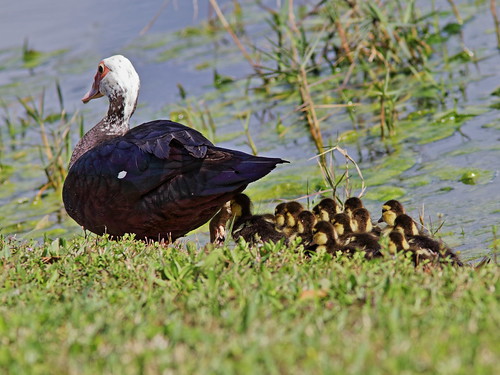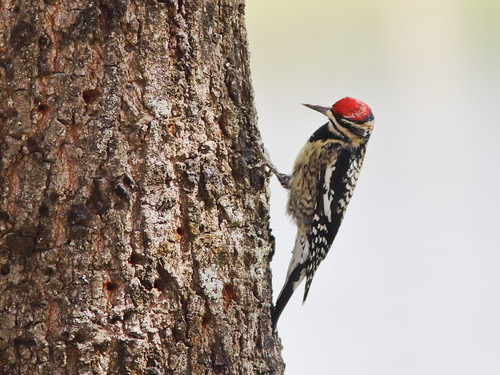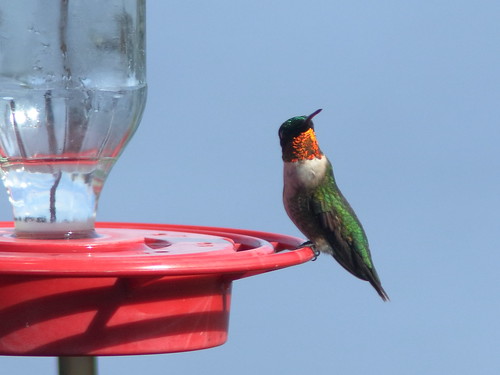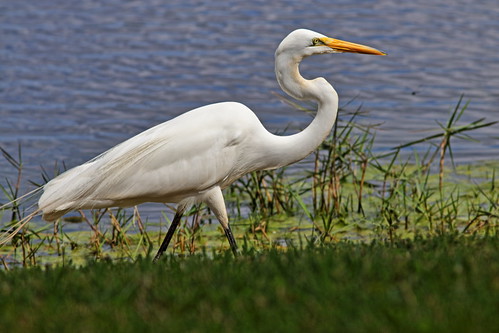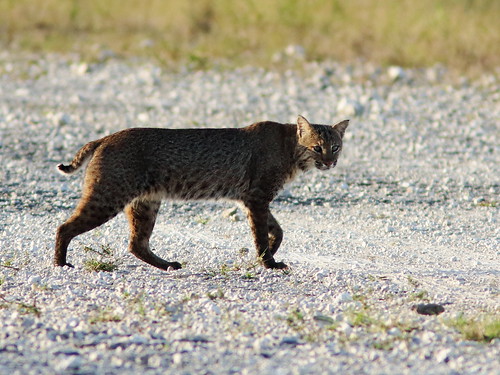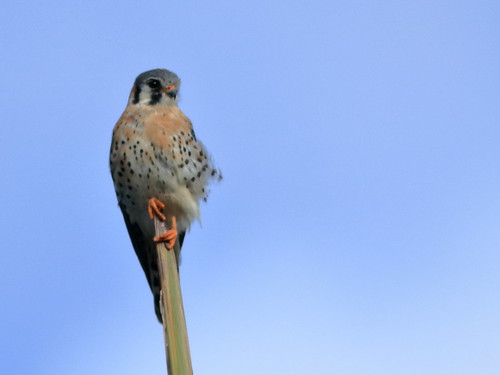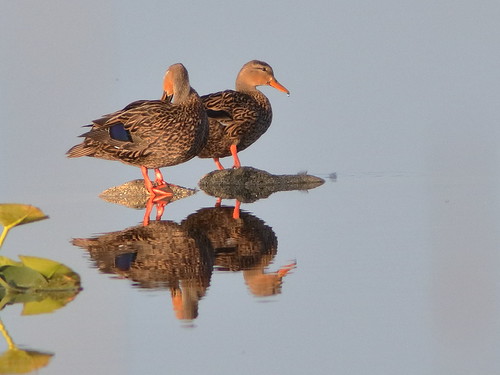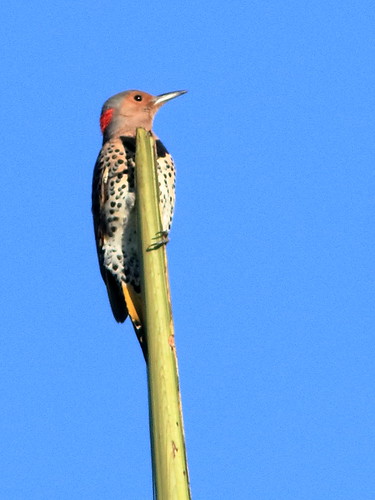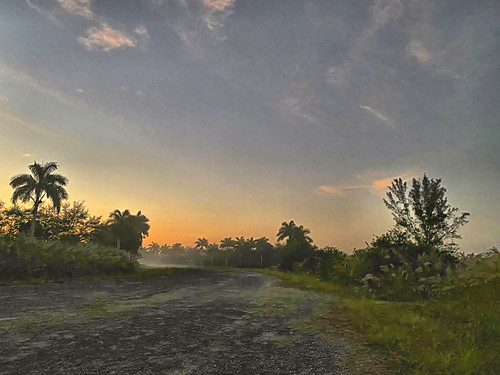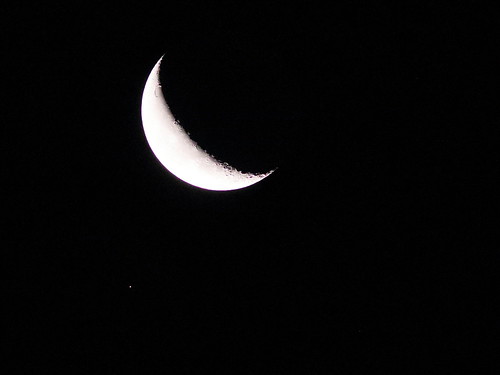My grandmother, who lived next door to our home in New Jersey, fed bread to the "Chippies," English (now House) Sparrows and maintained a nest box for the "Jenny" (House) Wren.
The abundance and variety of birds always made them creatures which deserved greater interest. I remember helping Dad rescue a young "crane" (in retrospect, a Great Blue Heron) which had gotten entangled in some kite string and bushes in the Passaic River bottomlands. He placed his jacket over the bird's head and menacing beak as he freed it and carried it out into an open field. There, we watched triumphantly as it took low and lumbering flight.
My only concrete reference point is a loose-leaf "My Bird List," which I started as a Boy Scout merit badge project in December, 1948. The advent of spring migration boosted my list to 114 species by the end of May, 1949. The penultimate new species that month was a Cedar Waxwing, a member of a flock "in a cherry tree near Neil's yard."
As is the case with many of my first non-routine sightings, I still remember these birds, crested and neatly attired in warm brown with yellow tail-tips and some with bright red accents on their wings. Now the American Birding Association (ABA) has designated the Cedar Waxwing as "2020 Bird of the Year."
Bird photography was not part of my life until 2008, four years after we moved to south Florida, when our son-in-law gifted me with a first generation (6.3 megapixel) Canon Digital Rebel with a 70-300 mm zoom lens. My first photos of Cedar Waxwings were taken during a visit to their Illinois home, at neighboring Hawk's Bluff Park in September 2008:


Since then I have seen Cedar Waxwings during the winter a few times in Florida, but all my photos were obtained while visiting (and for several years, occupying our second home in) northeastern Illinois.
This photo was taken on May 2, 2009 with my upgraded Canon EOS 30D with 420 mm prime lens system:

Cedar Waxwings are very sociable. They travel in flocks:

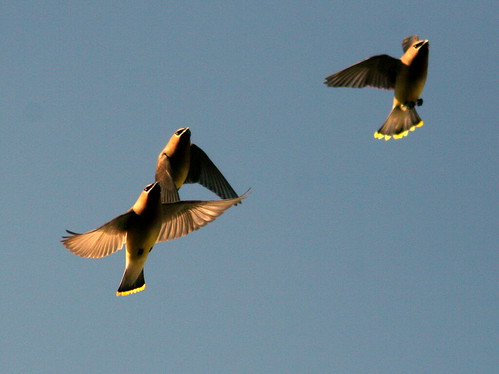
The name of this species is descriptive. It eats the berries of cedar trees during the winter and older birds have waxy-looking red tips on their secondary wing feathers, features visible in this poor photo:
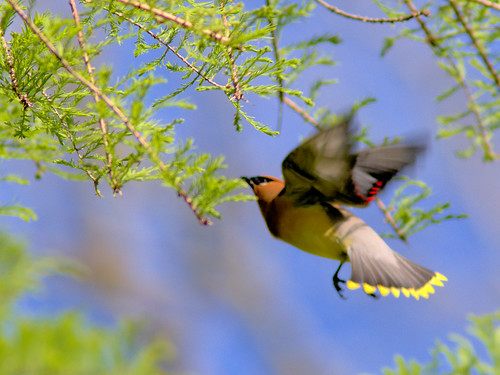
Incidentally, the above waxwing is hovering as it plucks the small female cones on a Bald Cypress tree, on May 23, 2017 in Lippold Park, Kane County, Illinois. Many had assembled to harvest this crop:
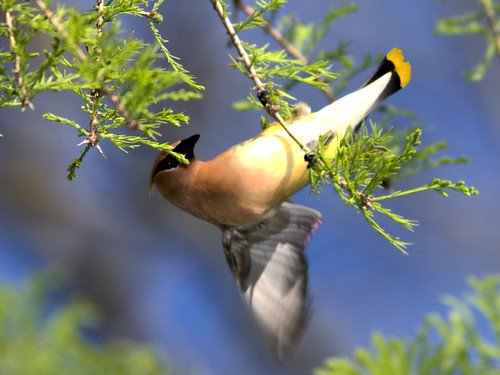

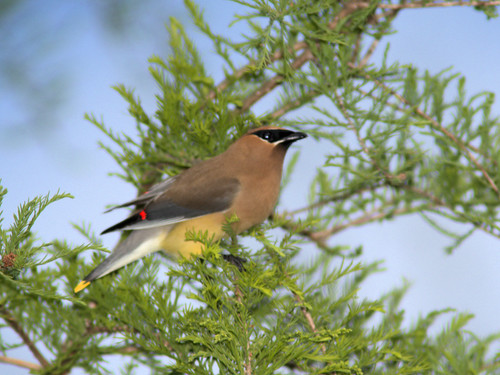
The deciduous Bald Cypress bears male flowers in autumn which persist as catkins on the bare branches all winter but do not produce pollen until spring, when the female cones emerge and are pollinated before new leaves sprout. This bird seems to be closely inspecting two of the cones:
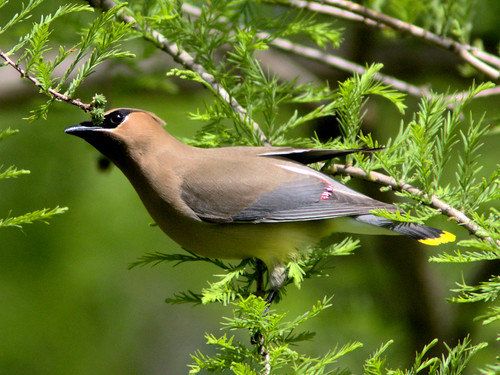
Immature Cedar Waxwings have streaked breasts and little or no head crest (Lippold Park, September 18, 2017):
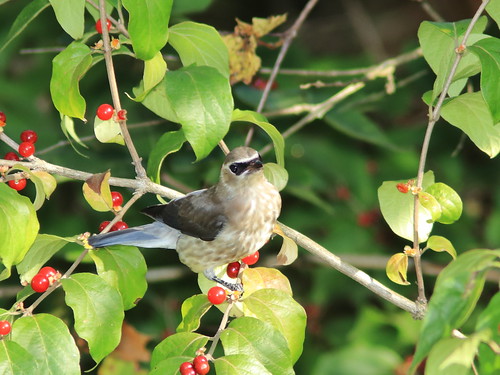
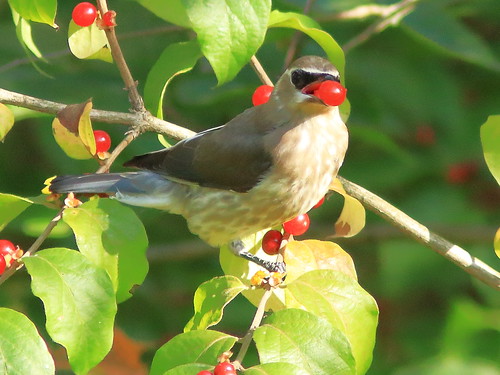
This red-tailed Hawk has captured a young waxwing (along with a twig and some leaves) and is being pursued by a Red-winged Blackbird:
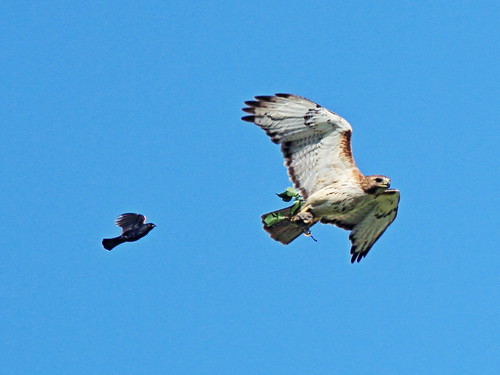

Out an hour before sunrise on our local wetlands on Sunday, February 23, I found that the off-road riders had done me a favor. For more than two years It has been impossible to access one of my favorite birding trails. Hurricane Irma had downed several trees and the entrance to the trail was hopelessly blocked. The ATV bunch came equipped with chain saws and opened the entrance.
I call this trail the Bar Ditch Trail, as it is a long-abandoned farm road created along a drainage ditch by using the soil from the ditch. The term "Bar" comes from "Borrow Ditch," referring to the earth and rocks "borrowed" for the road. The trail is mostly under water during the wet (summer) season, but I was able to walk in about 1/3 mile before encountering soft mud.
It was so nice seeing the water and there were signs of aquatic life:

It was still dark when I reached a very muddy patch, so I turned around and enjoyed the sunrise:
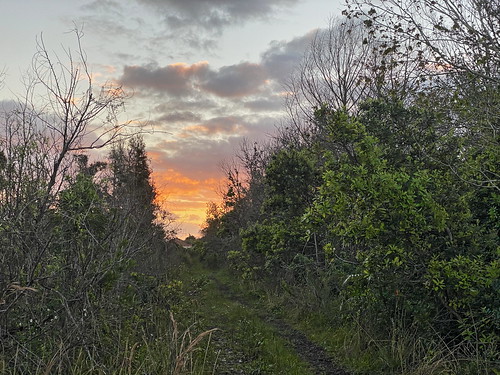
The soft mud contained the tracks of a deer and a Coyote:

I also found Bobcat tracks:
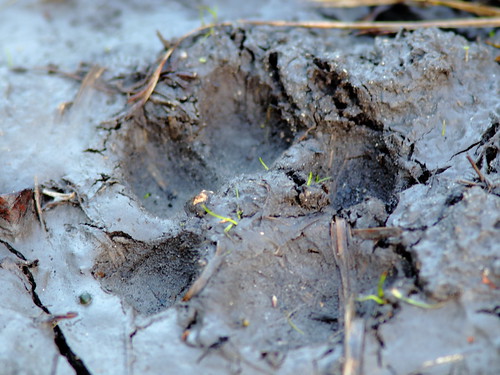
Yesterday (February 26) I encountered a herd of seven White-tailed Deer, the most I have ever seen together in the local wetlands:

I fear that the deer are refugees from a large plot of land which is being developed to the north of us. Interestingly, the second doe from the left in the above photo is blind in her right eye. Here is a closer look:
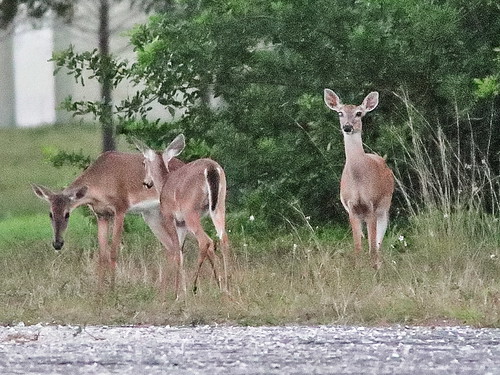
This is the same animal which I encountered five years ago, in 2015. I call her "One-eye" and had seen her few times since, once with a fawn following her. Here is my first photo of her, taken on January 23, 2015. She certainly is a survivor:

= = = = = = = = = = = = = = =
Linking to :
Fences Around the World
Skywatch Friday
Weekend Reflections
Saturday's Critters
BirdD'Pot
Camera Critters
All Seasons
Wordless Wednesday (on Tuesday)
Our World Tuesday
________________________________________________
Please visit the links to all these posts to see some excellent photos on display
________________________________________________

